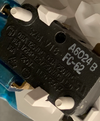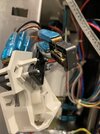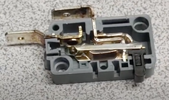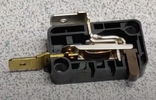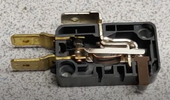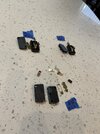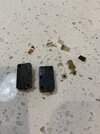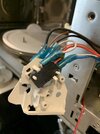ForumUser1
Member
Hi All,
Not exactly center of this group's interest, but thought I might get lucky!
Five year old, very expensive Kitchenaid (Whirlpool) convection/microwave oven mounted above stove.
Have replaced the brackets that hold the door switches, and that worked for awhile, but now same indication of door open/close, so after reviewing a lot of threads and videos, I think it is likely ONE of the THREE switches - while each has a different part number they all appear to be the same function - either single or double switch. Three connector locations - one switch uses all three pins (two sets of points), and two switches have single points, one normally closed and one normally open.
One fellow's video (
) showed how he swapped out all three to the same Omron switch, simply using the correct two of three connectors on the single point switches - he didn't specify an Omron part number, though.
I'm having trouble finding which Omron switch to use ... anyone have idea how to do this?
Thanks!
Not exactly center of this group's interest, but thought I might get lucky!
Five year old, very expensive Kitchenaid (Whirlpool) convection/microwave oven mounted above stove.
Have replaced the brackets that hold the door switches, and that worked for awhile, but now same indication of door open/close, so after reviewing a lot of threads and videos, I think it is likely ONE of the THREE switches - while each has a different part number they all appear to be the same function - either single or double switch. Three connector locations - one switch uses all three pins (two sets of points), and two switches have single points, one normally closed and one normally open.
One fellow's video (
I'm having trouble finding which Omron switch to use ... anyone have idea how to do this?
Thanks!
